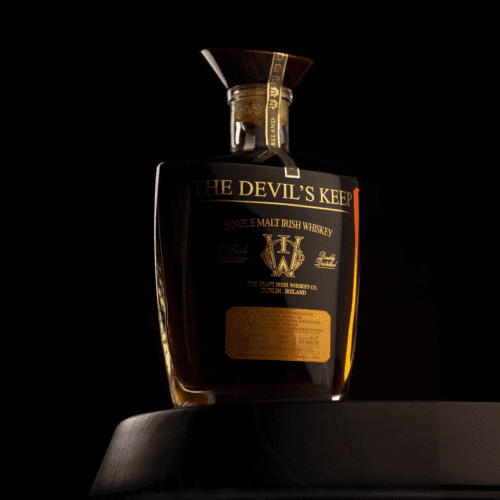Oak, vanilla, marzipan, honey, leather, incense, tobacco, tar. What could all of these things possibly have in common? Well, each and every one is a common tasting note used to identify flavours found in whiskey. And we haven’t even started talking about herbs or fruits, yet. But before we do, let’s be clear about what we talk about when we’re talking about flavour in whiskey.
To be sure, none of the aforementioned descriptors are actually inside the liquid. In fact, if we’re talking about formally defined liquids such as Bourbon, Irish Whiskey, and Scotch—they can’t be: You’re not allowed to use any additives in these products. So all of these tasting notes are owed to the casks used to age them. If we’re talking about Straight Bourbon, it’s a mandatory minimum of two years in those wooden vessels. For Irish and Scotch, it’s three. And wood accounts for anywhere between 60-80% of the overall flavor found in your favorite whiskey. The precise number fluctuates with the style.
Remember, that when the grain spirit rolls off the still, it always comes out a clear liquid. Elements of the constituent grain (corn, rye, barley—sometimes other cereals such as wheat, oats) can certainly be appreciated if you were to sample it at this point. Indeed, some producers opt to bottle it at this point—a category known as “white dog” in the US or poitín in Ireland. But it carries nowhere near the complexity that it will soon amass after slumbering in the barrel.
This is most assuredly not an overnight process. Nor is it a cheap one. Whiskeymakers need to patiently wait for years as their initial distillate mellows out in warehouses. All the while it extracts all sorts of sensational wood sugars and other assorted flavor molecules from the surrounding staves.
To help better identify the specific tastes that develop, certain members of the spirits trade have endeavored to create flavour wheels. They helps us to compartmentalize what we’re experiencing and liken these assorted components to certain things that we’re all familiar with. And when you can see it all broken down in visual form, it’s even more helpful—especially as you’re beginning your journey into the wide, and sometimes overwhelming world of whiskey.
A common example will use up to a dozen generic flavour basics, including sweet, spicy, nutty, herbaceous, floral, fruity, peaty, oaky. Then each of these will be further refined to include myriad examples within each category. Floral could include lavender, rose, and heather. Fruity could mean orchard fruit—apples, pears—and tropical fruit…mango, papaya, pineapple.
Sometimes there’s a very good reason for these analogues. Maybe you taste some banana notes in your favourite Tennessee Whiskey, for example. Well, there’s a good chance that during fermentation, a specific ester—or flavour compound—called isoamyl acetate was formed. And guess what, that’s the very same ester found in a ripened banana! But we’ll get more into the science later.
For now, just think about what you’re tasting and how you can take basic inventory as you sip. The best part is, there is no right or wrong answer! Just enjoy your dram and see what you find. They don’t even have to be food products at all. Iodine, pine, hay, wet horse?! No matter what it is, you’ll soon learn that calling out any adjective that comes to mind can be one of the funnest parts of sampling new whiskies.










